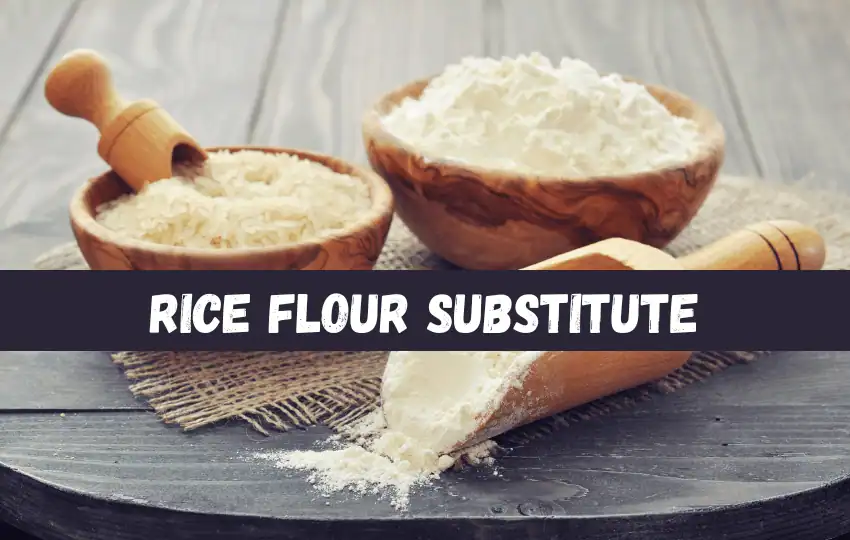Are you a food lover who loves experimenting with new ingredients but don’t always have everything you need on hand?
As a home cook and chef, I know the importance of having a well-stocked pantry.
But sometimes, even the most prepared of us can run out of essential ingredients, like rice flour.
It’s a staple in gluten-free and Asian cooking, after all, and its absence can ruin a recipe. Don’t worry because there are plenty of good rice flour substitutes you can use in a pinch.
In this blog, I’ll share 14 of my go-to choices along with the ratios to ensure your dish turns out perfectly every time.
In short, " What can I use instead of rice flour?" Potato Starch, Tapioca Starch, Cornstarch, Wheat Flour, Almond Flour, Chickpea Flour, Buckwheat Flour, Oat Flour, Quinoa Flour, Cassava Flour, Coconut flour, Soy flour, Sorghum Flour, Teff Flour.
What is rice flour, and what does rice flour taste like?
Rice flour is a kind of flour produced from finely milled rice. It has a light, slightly sweet flavor and is often used in gluten-free baking.
Rice flour has a soft texture similar to wheat flour but with a slightly nutty taste. It can be used for pancakes.
Rice flour is finely milled flour made from white or brown rice. It has a mild, earthy flavor and can be utilized in place of wheat flour for baking and cooking.
Rice flour has a slightly grainy texture compared to the smoother texture of wheat-based flour, but its neutral taste makes it ideal for sweet treats like cakes and muffins.
Additionally, it’s gluten-free, so it’s perfect for people with food allergies or dietary restrictions.
Rice flour is also a great substitute for wheat flour when making bread and other baked goods, as rice flour helps to keep the dough light and fluffy.
It can also be used in thickening gravies and sauces or as a coating for fried foods like tempura.
What are the Uses of rice flour?
Rice flour is one of the most versatile and accessible flours on the market, used as a thickening agent, baking enhancer, and gluten-free alternative.
With its versatility and mild flavor, rice flour is an excellent addition to any kitchen!
Best Rice Flour Substitutes and How to use them with Ratio
Although there are many reasons to love rice flour, sometimes you may be looking for an alternative that offers different qualities or flavors. Here are 14 of the best replacements for rice flour:
1. Potato Starch
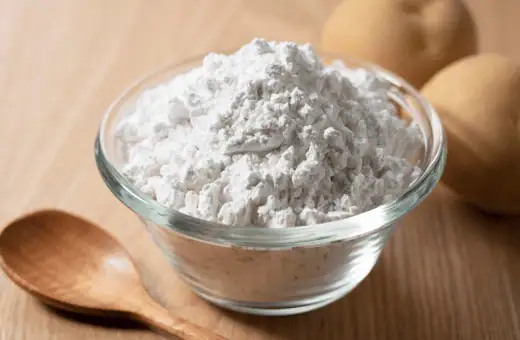
Ratio: To substitute, you can use a 1:1 ratio, so if your recipe calls for one cup of rice flour, utilize one cup of potato starch instead.
2. Tapioca Starch
You can try Tapioca starch, also known as tapioca flour, which is another good alternative for rice flour in gluten-free baked goods.
Ratio: Use the same 1:1 ratio as you would with potato starch.
3. Cornstarch
These are very common kitchen ingredients, so you can easily try them. Cornstarch is a popular choice for thickening sauces and soups, but it can also work as a rice flour substitute.
Ratio: Use a ¾ cup of cornstarch for every cup of rice flour demanded in the dish
4. Wheat Flour
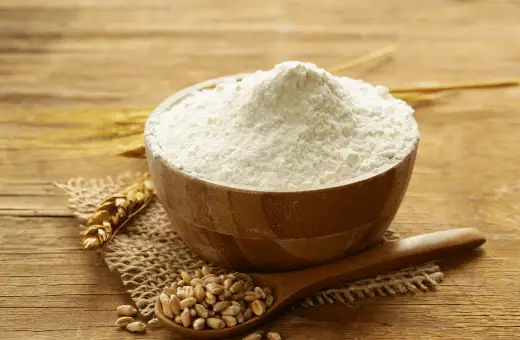
While not gluten-free, wheat flour can be used as a substitute for rice flour in non-gluten-free recipes.
Ratio: Use 1 ¼ cups of wheat flour for every cup of rice flour called for.
5. Almond Flour
Almond flour is produced from ground almonds and has a light texture and nutty flavor. It is a popular substitution for rice flour in gluten-free recipes due to its ability to bind ingredients together without producing a gritty texture.
When utilizing almond flour as a replacement for white rice flour, it should be combined with another gluten-free flour such as tapioca starch or potato starch in a 3:2 ratio (3 parts almond to 2 parts starch).
6. Chickpea Flour
One of my favorite Chickpea flour is also known as gram flour or besan. It is popular in Indian and Middle Eastern cuisine and can be used in recipes for noodles, pancakes, and fritters.
Chickpea flour has a slightly nutty flavor.
To use chickpeas as an alternative - replace 1 cup all-purpose wheat flour with ½ cup chickpea four & ½ cup cornstarch.
This combination consists of enough protein & lightness that mimics all-purpose wheat perfectly!
7. Buckwheat Flour
While it has the word wheat in its name, buckwheat is actually a gluten-free grain. Its taste is nuttier and stronger than rice flour, making it better for rustic bread and pancakes.
When trying out buckwheat instead of traditional wight rice, start off by combining equal portions (1 cup each) of buckwheat & tapioca starch plus ¼ cup amaranth flour.
This combination will yield approximately 1 ½ cups of “rice,” four blends that add protein along with the extra sweetness required to replace the original!
8. Oat Flour
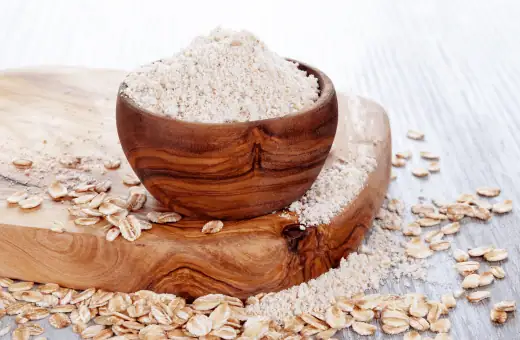
Oat flour is produced by grinding rolled oats and has a slightly nutty taste.
It works well in recipes that require a dense texture, like bread and muffins, but it might not be suitable for cakes and cookies that need a lighter texture.
Use a 1:1 ratio if you’re substituting rice flour with oat flour.
9. Quinoa Flour
Quinoa flour is high in fiber, protein, and many essential vitamins and minerals. It is a versatile substitute that works well in most gluten-free recipes like cakes, muffins, bread, and pancakes.
Ratio or measurement: To use quinoa as a substitute, mix equal parts (1 cup each) of quinoa and tapioca flours plus ¼ cup cornstarch.
This combination will yield approximately 1 ½ cups of “rice” flour blend that adds proteins along with lightness & stability at the same time!
10. Cassava Flour
Cassava flour is made from yucca root and is common in Latin-American cuisine.
It has a slightly sweet taste and is highly absorbent, so you might need to use more liquid when using cassava flour compared to rice flour.
It’s a fantastic gluten-free alternative to wheat flour, including cakes, muffins, bread, and pizza crusts and can be used in non-gluten-free recipes as well.
Ratio: Use a 1:1 ratio with rice flour.
11. Coconut flour
Coconut flour is a healthy option as it is high in protein but is a bit tricky to use as it absorbs liquids rapidly due to its high fiber content.
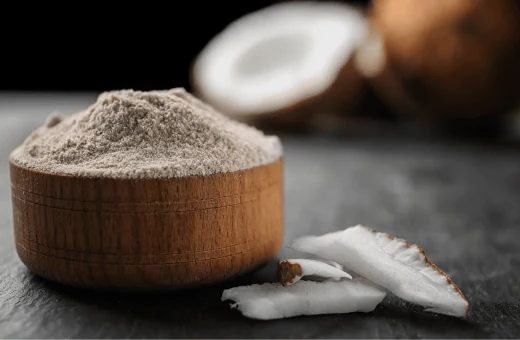
This makes it an excellent substitute for those following low-carb diets or avoiding certain grains due to allergies or food sensitivities.
It is best used in small quantities, and its ratio is 1/4 cup of coconut flour for every 1 cup of rice flour.
12. Soy flour
Soy flour is best used in small quantities and mixed with other gluten-free flour for texture and taste. It is rich in protein and healthy fats and is great for making bread and muffins.
Ratio: Use 1/2 cup of soy flour for every 1 cup of rice flour.
13. Sorghum Flour
Sorghum is often considered the grain counterpart to oats because it contains almost the same amount of calories per serving but holds much higher amounts of minerals such as iron & magnesium compared to derived products like quinoa!
What’s even better – Sorghum offers high levels of antioxidants & anti-inflammatory properties, making it an ideal choice when trying out healthy swaps like replacing white rice fours!
Ratio: combine equal portions (1 cup each) of sorghum & tapioca starch plus ¼ cup sweet potato syrup.
This combination will yield approximately 1 ½ cups of “rice” four blends that add both nutritional values along with lightness & stability at the same time!
14. Teff Flour
Teff is another ancient grain popularized recently due to its delicious nutty taste & unique nutritional profile containing significant amounts of vitamins A & C making it the perfect addition to any healthy lifestyle diet plan!
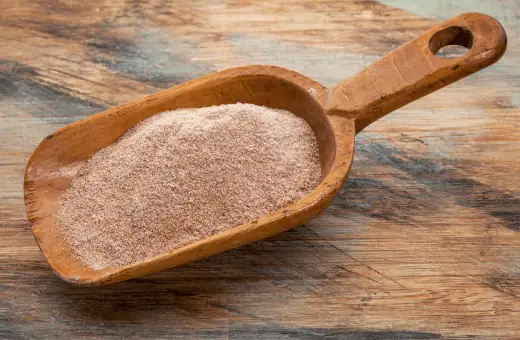
When using Teff Fours, try replacing 1 cup all-purpose wheat flour with ½ cups teff four + ½ cups cornstarch.
This combination results in enough nutritional value along with the lightness & structure required from traditional wheat ones!
Discover: glutinous rice flour vs Mochiko Flour
Where to buy rice flour?
If you are looking for where to buy rice flour, there are a few different places you can go. Many specialty food stores carry it, as do some international grocery stores.
You can also order online from many retailers that provide a variety of diverse flavors and types of rice flour.
Read More- Ideal Rice Flour Substitute for Kimchi
Conclusion on rice flour substitute
So, don’t let a missing ingredient ruin your recipe. Keep these 14 rice flour substitutes and ratios in mind the next time you’re cooking.
Remember, different flours have different tastes and textures, so experiment and see what works best for you.
With these substitutions, you’ll be able to create delicious, gluten-free, and non-gluten-free meals with ease. Happy cooking!
Find out: Rice flour substitute for mochi
FAQs on rice flour substitute
Q1. What is similar to rice flour?
Similar to rice flour, other types of flour made from grains can be used in baking and cooking. This includes grain-based flours such as buckwheat, millet, amaranth, quinoa, sorghum, teff and barley.
Nut-based flour, such as almond flour or coconut flour, is also becoming more popular. There are even some specialty flours like garbanzo bean/chickpea flour and fava bean/broad bean flour that can be found in health food stores.
Q2. Can I replace rice flour with plain flour?
It is possible to replace rice flour with plain flour; however, this may change the texture of your dish. Plain flour is made from wheat, while rice flour is a gluten-free alternative that is usually made from white or brown rice.
When using plain flour in place of rice flour, it is important to add additional moisture to ensure that the finished product doesn’t dry out. This can be done by adding more liquid or fat (e.g., butter or oil) to the recipe.
Additionally, when substituting plain flour for rice flour, you may need to increase the amount used as rice flour has a finer texture which will absorb more liquid than regular all-purpose wheat flour.
For best results, look for recipes specifically calling for plain or wheat flour and avoid attempting to replace a large amount of rice flour with plain/wheat flour in recipes that call for a significant amount of the latter ingredient.
Q3. What is the same as rice flour?
Rice flour is most commonly used as a gluten-free alternative to wheat flour. Other alternatives to rice flour include tapioca flour, almond meal/flour, buckwheat flour, quinoa flour, coconut flour, and sorghum flour. Each of these has unique characteristics that make them suitable for certain types of baking and cooking applications.
Q4. Is rice flour and Maida the same?
No, rice flour and Maida are not the same. Rice flour is a type of gluten-free flour made from finely milled rice. It has a mild flavor and can be utilized to make a variety of dishes, such as pancakes, bread, and pastries.
On the other hand, Maida is a type of wheat flour made from very finely ground wheat. It has a light texture and is usually used in baking cakes, pastries, and biscuits.
Rice flour tends to have more nutrients than Maida due to its gluten-free nature, while Maida often contains fewer vitamins and minerals as it’s processed at high temperatures.

